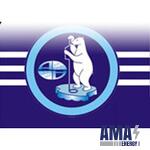Bottom ice
In freezing seas, the main danger for pipelines laid along the bottom of the sea are keels of hummock formations, and damage to the underwater pipeline can be caused by both dynamic and static loads. Dynamic loads occur when keels of hummocks are exposed to the pipe, the draft of which is commensurate with the depth of the sea, during the drift of agitated ice fields. Static loads occur during the formation of granules directly above the pipeline
There are three sources of information about the processes of interaction of ice formations (LO) with the seabed:
![]() The data of winter ice research expeditions , which make it possible to get an idea of the morphometric features of the ice cover in the study area, to evaluate, by direct measurements, the penetration depth of the keel stamukha (LO with bottom contact).
The data of winter ice research expeditions , which make it possible to get an idea of the morphometric features of the ice cover in the study area, to evaluate, by direct measurements, the penetration depth of the keel stamukha (LO with bottom contact).
![]() During the summer period, during the sonar survey of the bottom , an array of data is accumulated on the geometry of the traces of the examination, and their distribution over space.
During the summer period, during the sonar survey of the bottom , an array of data is accumulated on the geometry of the traces of the examination, and their distribution over space.

![]() Math modeling.
Math modeling.
The materials listed above, as well as the results of geological studies, are used to improve and verify the numerical model, which is an indispensable tool for assessing the extreme parameters of the impact of LO on the bottom.
The combination of methods of field research and modeling, using all available information about the ice and hydrometeorological regime of the survey area, allows you to get the most plausible estimates of the probability of crossing the designed route, the depth of penetration of LO into the ground, the degree of risk, and on this basis to develop appropriate recommendations for the construction of underwater offshore communications.


